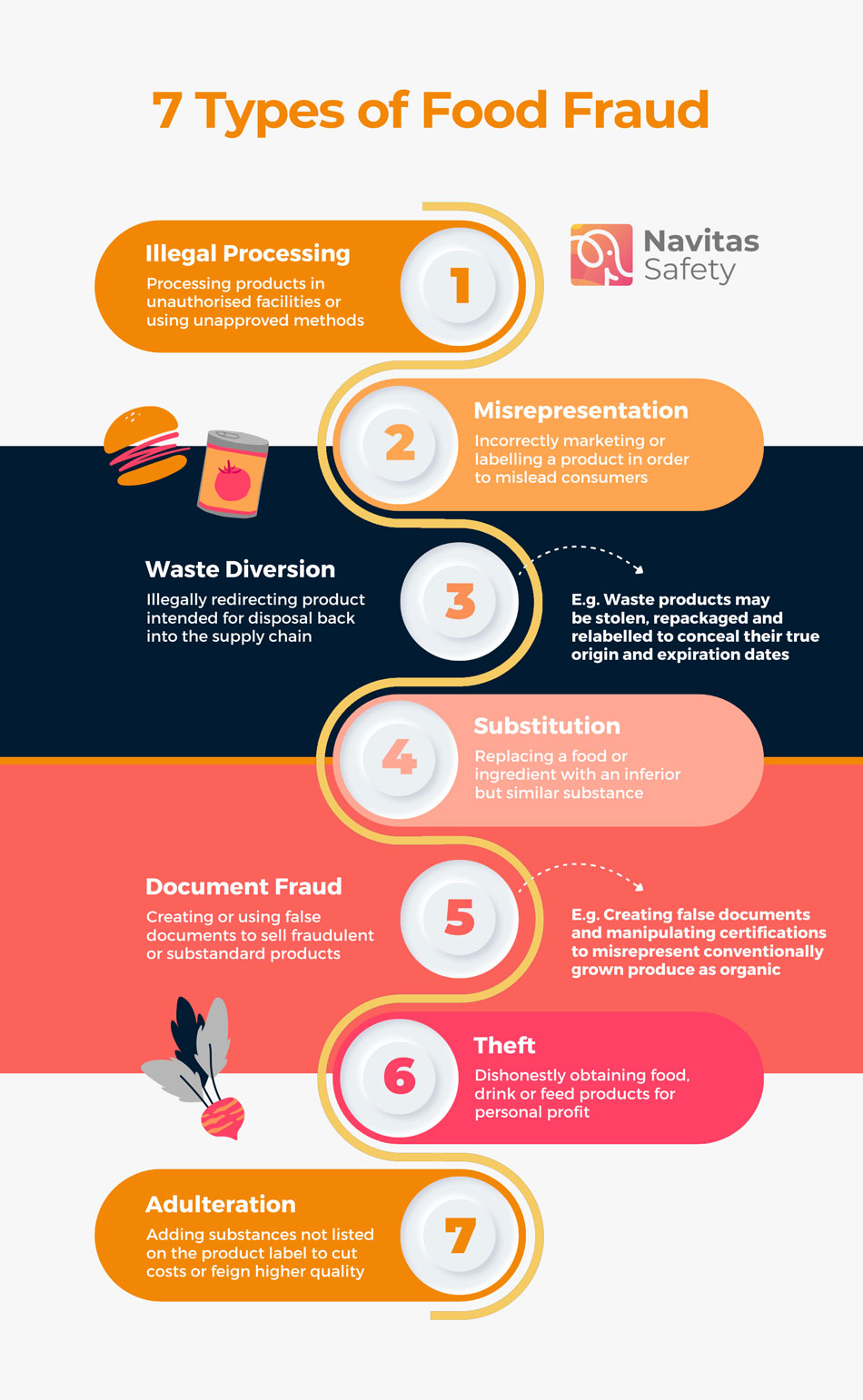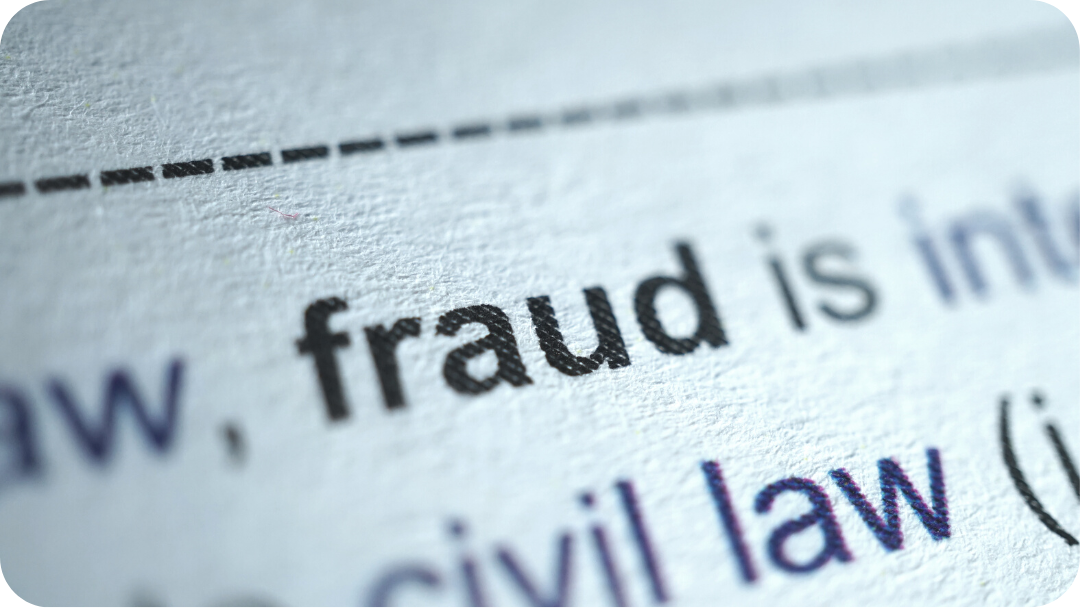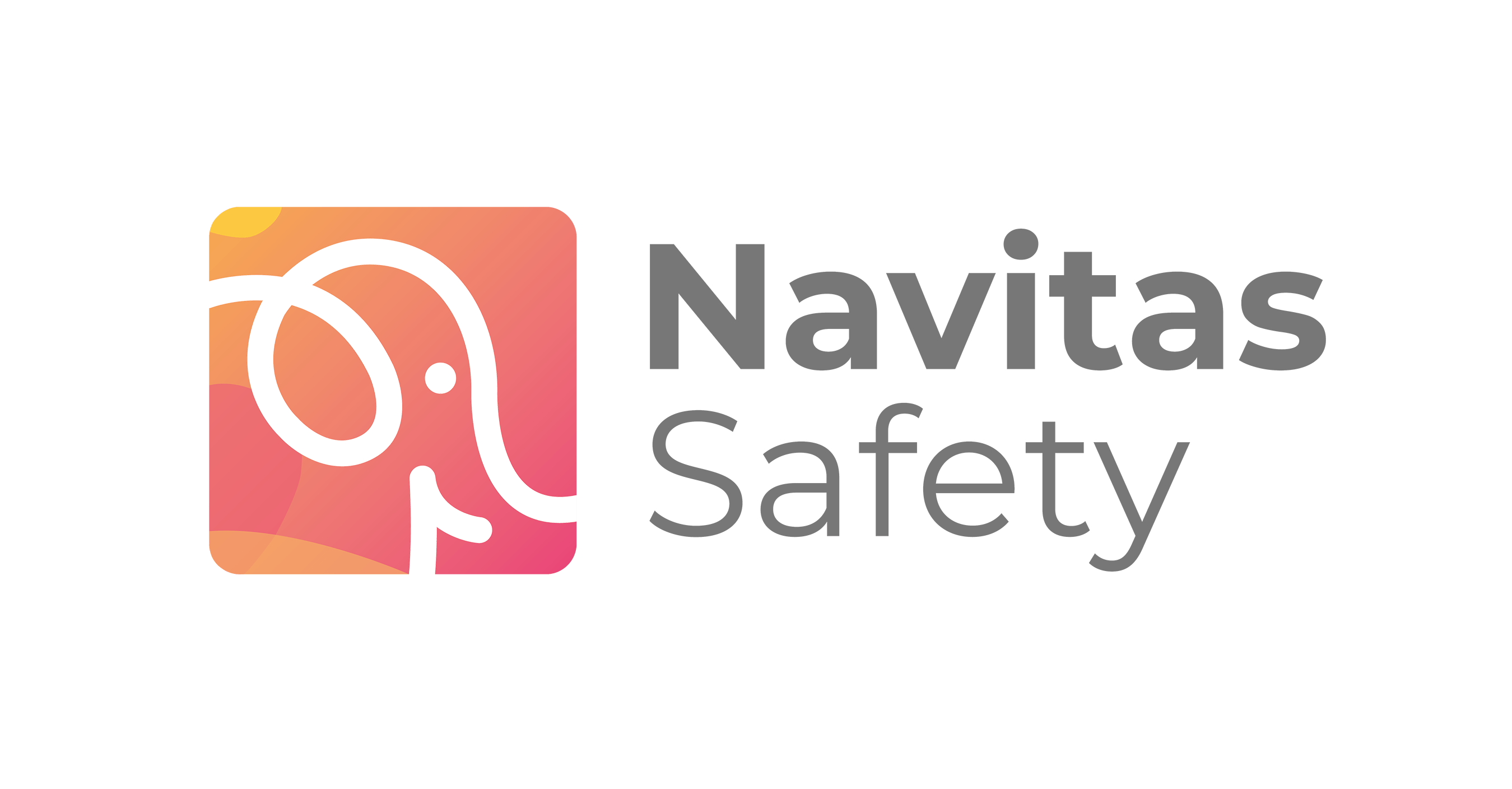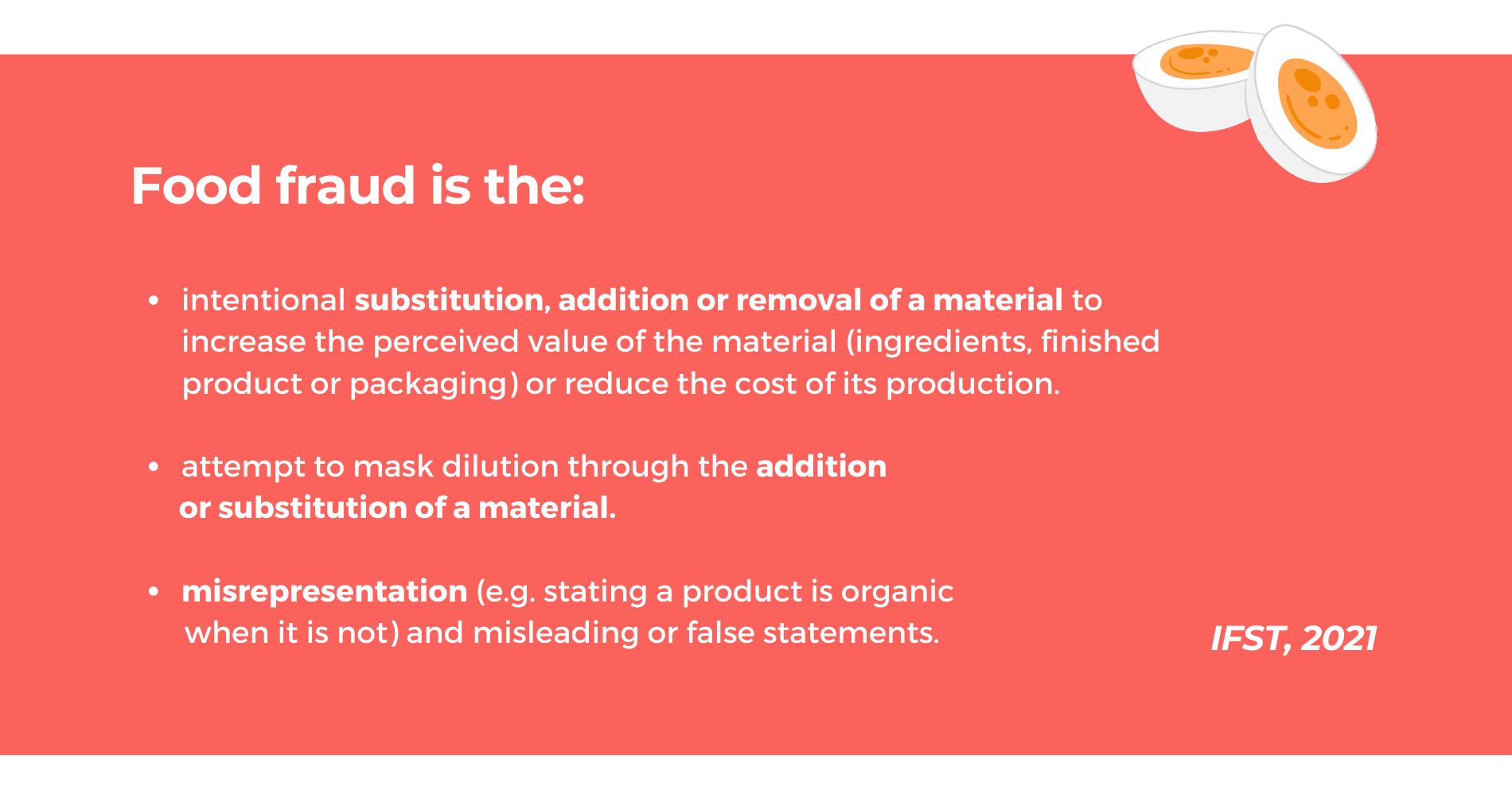What is Food Fraud?
Let’s start with a key definition: what is food fraud?
Food fraud is a deliberate act involving the substitution, addition, or removal of materials to enhance the perceived value of a product or to lower production costs.
You might have heard about it already, as it’s a critical issue affecting the food industry. However, it’s still not a topic that is prominently discussed, despite several severe cases in connection with it that we’ll talk about shortly.
In this blog, we’ll delve into the types of food fraud, the significant impacts it has on consumers and the economy, and how businesses can combat this.
Types of Food Fraud
The Food Standards Agency (FSA, 2021), depicts the seven types of food fraud as:
Illegal Processing:
Processing meat or related products in unauthorised facilities or using unapproved methods.
For example:
The facility hasn’t obtained the necessary permit or licences, and isn’t adhering to proper health and safety regulations. Consumers who unknowingly purchase and consume these illegally processed products are put at risk. This is due to potential contamination, inadequate processing, and lack of oversight and regulation.
Misrepresentation:
Incorrectly marketing or labelling a product to mislead consumers regarding its quality, origin, safety, or freshness.
For example:
Deceptive suppliers mislabeling farm-raised salmon as wild-caught salmon in order to falsely represent its origin. The objective being to market for a higher price and deceive consumers who prefer the taste and perception of wild-caught salmon.
Waste Diversion:
Illegally redirecting food, drink, or feed intended for disposal back into the supply chain.
For example:
An employee may identify salvageable food products that can still be consumed or sold. They are repackaged and relabelled to conceal their true origin and expiration dates. Consumers who unknowingly purchase and consume these diverted food products are at risk of consuming expired or contaminated items. This poses potential health hazards.
With the new Mandatory Food Waste Segregation regulations coming into effect, it’s essential businesses don’t resort to committing waste diversion to overcome the waste regulation enforcement.
Substitution:
Replacing a food or ingredient with an inferior but similar substance.
For example:
A business might mix lower-grade or questionable meats with higher-grade meats to cut costs and maximise profits. Additionally, they may mislabel the products to mislead consumers. Therefore presenting a fraudulent image of compliance with industry standards and regulations.
Document Fraud:
Creating or using false documents to sell fraudulent or substandard products.
For example:
Creating false documents to misrepresent conventionally grown produce as organic. This fraudulent activity involves manipulating certifications to sell products at a premium price under the guise of being organic.
Theft:
Dishonestly obtaining food, drink, or feed products for personal profit.
For example:
Individuals with access to a production facility engage in dishonest practices by unlawfully acquiring products and by-products with the intention of reselling them.
Adulteration:
Adding foreign substances not listed on the product label to cut costs or feign higher quality.
For example:
Adulterating a premium product, olive oil, by diluting it with lower-quality oils. This increases volume, reduces production costs, and maximises profits while deceiving consumers about the product’s true quality.

Impacts of Food Fraud
Consumer Impact
Food fraud doesn’t just deceive consumers; it can have severe consequences.
Consumer impact includes health risks from exposure to toxic chemicals, mislabeled allergens, or pathogenic bacteria.
For instance, in 2016 a customer died due to substitution food fraud. The substitution was done by a restaurant owner, who replaced almond powder with a cheaper mixture containing peanuts instead. This resulted in a fatal allergic reaction for the customer who was allergic to peanuts, and the owner was sentenced to prison.This fraudulent substitution of ingredients had severe and tragic consequences, highlighting the serious risks and dangers associated with food fraud. Check out our Allergen Labelling and Natasha’s Law blog for more information how to manage allergens effectively.
Economic Impact
Economically, food fraud can lead to substantial losses for food producers too – from factory closures to product recalls.
In a 2003 incident, Worcestershire sauce was contaminated with Sudan I (a carcinogenic dye) after it was fraudulently added to chilli powder used in the product. This contamination led to a significant food safety concern, and as a result, a large-scale product recall was initiated across Europe. The recall was estimated to cost approximately £200 million. Therefore, if it is discovered that a food product is fraudulent, it can be costly to ensure that consumers don’t come into contact with any contaminated products.
Other examples of severe food fraud consequences include:
Melamine Contamination in Infant Formula
(China, 2008)
Melamine, a chemical used in plastics and fertilisers, was added to infant formula and other dairy products in China to artificially boost protein levels. This led to kidney damage and urinary tract issues in approximately 300,000 infants. Sadly resulting in at least six deaths and thousands of hospitalisations.
Methanol Adulteration of Alcoholic Beverages
(Czech Republic, 2012)
Methanol, a toxic alcohol, was added to various alcoholic beverages in the Czech Republic. This resulted in over 30 deaths and hundreds of hospitalisations due to methanol poisoning.
Toxic Seed Oil (Spain, 1981)
Rapeseed oil intended for industrial use was fraudulently sold and consumed as olive oil in Spain. The adulteration caused thousands of cases of toxic syndrome, resulting in over 600 deaths and severe health complications.

Framework for Mitigating Food Fraud
We understand that the consequences of food fraud can be upsetting. However, this underscores the critical importance of strong regulatory frameworks, rigorous quality control, effective food safety systems, and public awareness to prevent and mitigate the impact of food fraud on public health.
To effectively combat food fraud, businesses must prioritise maintaining reputable suppliers with clear traceability throughout the supply chain. This approach is crucial for ensuring the authenticity, safety, and quality of the products they procure and distribute.
Here’s how you can do this:
Supplier Due Diligence:
- Thorough Screening: Conduct thorough background checks and due diligence on potential suppliers to assess their credibility, compliance with food safety regulations, and track record in the industry.
- Audits and Certifications: Ensure suppliers have appropriate certifications (e.g., ISO, HACCP, GFSI standards) and regularly audit their facilities to verify compliance with agreed-upon standards. Our Safety Services experts are happy to conduct impartial third party audits of your suppliers on your behalf.
Transparency and Traceability:
- Transparent Supply Chain Mapping: Establish a transparent and comprehensive map of the supply chain to understand where products originate and how they move through the production and distribution processes.
- Utilise Technology: Implement a traceability software, such as Navitas Safety’s Health and Safety Compliance Software. This allows for comprehensive management of your supply chain, real-time monitoring and verification.
Supplier Relationship Management:
- Strong Communication Channels: Establish open communication channels with suppliers to foster a strong relationship built on trust, understanding, and shared commitment to quality and authenticity. You can do this within our Health and Safety Compliance Software too! Keep everything in one, clear location for your peace of mind.
- Regular Performance Reviews: Conduct regular performance reviews to assess suppliers’ adherence to agreed-upon quality standards, delivery timelines, and ethical business practices.
Risk Assessment and Mitigation:
- Identify Vulnerabilities: Conduct risk assessments to identify potential weak points in the supply chain where fraudulent activities could occur.
- Risk Mitigation Strategies: Develop and implement strategies to mitigate identified risks, which may include introducing additional quality control measures, diversifying suppliers, or investing in software for better oversight.
Education and Training:
- Employee Training: Train employees involved in procurement and supply chain management on recognising signs of potential food fraud and the importance of traceability and authenticity.
- Industry Knowledge: Keep staff updated on the latest trends and techniques used in food fraud to better detect and prevent fraudulent activities. Subscribe to our safety content updates for more industry news and tips.
Consumer Education:
- Transparent Labelling: Ensure that product labels provide accurate and transparent information to consumers regarding the origin, ingredients, and certifications, enabling them to make informed choices.

By prioritising reputable suppliers and emphasising traceability, businesses can significantly reduce the risk of food fraud in their supply chains, ultimately safeguarding public health and maintaining consumer trust.
It’s also important that we continue to raise awareness among consumers about the risks of food fraud and the importance of purchasing from reputable sources, so why not share this blog with your community?
Other references:
- Chartered Institute of Environmental Health (CIEH, 2016): Counter Fraud Good Practice
- Food Standards Agency (FSA, 2020): Food Crime Strategic Assessment
- Food Standards Agency (FSA, 2021): Food Crime
- Institute of Food Science and Technology (IFST, 2021): Food Fraud
- UK Parliament Post (POSTNOTE 624): Food Fraud
- Lawrence F (2014) Guardian: Fish and Chip Shop Fraud
- NFU Mutual: Food Fraud Report
If you need help with your safety processes, speak to a member of our safety team who will be able to advise you on how to operate safely.
Subscribe for more safety content updates:






